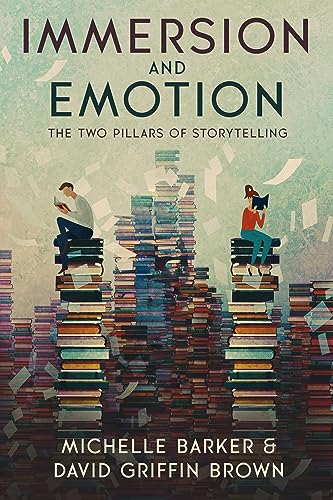
Immersion and Emotion: The Two Pillars of Storytelling

Write it out: Try writing out a favorite novel by hand. Literally the entire thing, one sentence at a time. This practice forces you to slow down and scrutinize the author’s process in depth.
Michelle Barker • Immersion and Emotion: The Two Pillars of Storytelling
Create a voice style guide: For each character, create a list of words, phrases, sentence structures, and metaphors they commonly use. This can serve as a reference for maintaining consistency in your narrative voice.
Michelle Barker • Immersion and Emotion: The Two Pillars of Storytelling
Read widely and analyze: Read different authors and genres and pay close attention to how they use voice in their work. Notice the narrative choices they make and how those choices reflect the characters’ personalities, attitudes, and emotions. How do they use language, tone, syntax, and imagery? Write down your observations and reflect on how you
... See moreMichelle Barker • Immersion and Emotion: The Two Pillars of Storytelling
Deep third person: This POV mode is sometimes called close third or limited third.
Michelle Barker • Immersion and Emotion: The Two Pillars of Storytelling
Book Broker interview series on the Chopping Blog,
Michelle Barker • Immersion and Emotion: The Two Pillars of Storytelling
Two things that should be told to the reader, and more than once, are (1) your character’s goal and (2) what’s at stake if they don’t achieve it.
Michelle Barker • Immersion and Emotion: The Two Pillars of Storytelling
Telling tends to work best when it provides insight into a character’s experience of a scene. Asides are a powerful form of telling, as they offer a window into the focal character’s thoughts, feelings, or reactions to a situation. When used sparingly and judiciously, telling can complement
Michelle Barker • Immersion and Emotion: The Two Pillars of Storytelling
When you allow some mystery to infuse the context, you create a gap between what’s happening and why it’s happening. This gap serves to heighten tension. The anticipation of finding things out slowly is part of the discovery process of reading. You should be treating your readers more like detectives than schoolchildren. Resist the urge to explain,
... See moreMichelle Barker • Immersion and Emotion: The Two Pillars of Storytelling
You’ll want to describe their psychological state. You might need to explain a bit of history or world-building. And sometimes you just need to tell the reader that the moon was shining and get on with it. The answer is: use this type of contextual information sparingly. You never want to inundate the reader with explanation.